In the neighbourhood of Brazilian footballer Ronaldo
A journey through the lower-middle-class northern suburb where Brazil’s World Cup-winning footballer grew up.
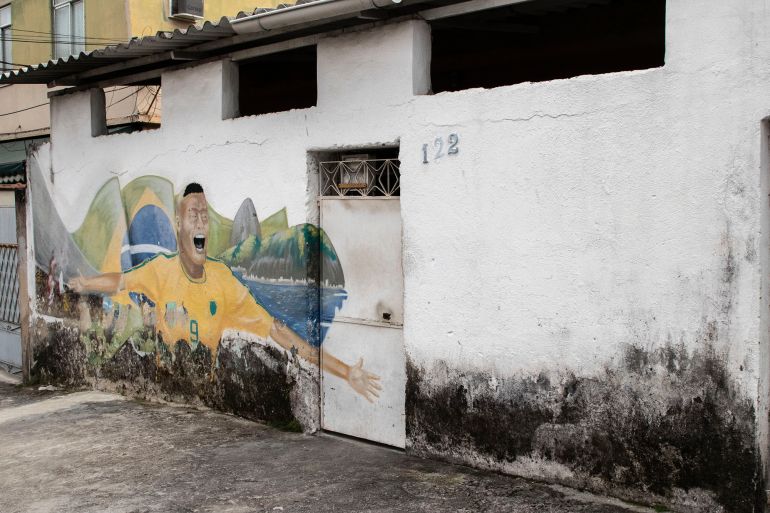
Rio de Janeiro, Brazil – On a sloped, worn-out road in Bento Ribeiro, a lower-middle-class northern suburb of Rio de Janeiro, an outside wall of a house bears the mural of Brazilian footballer Ronaldo.
Wearing the famous number nine yellow jersey and arms spread wide in celebration – with a Brazilian flag and Rio’s meatloaf hills in the background – the mural could aptly depict the country’s love for the World Cup-winning footballer as well as the game itself.
Keep reading
list of 3 itemsWhich teams have qualified for Qatar 2022 World Cup?
Canada changes football narrative with Qatar 2022 qualification
But in addition to those two reasons, there lies a bigger, and more significant, one: This is the street where Ronaldo Luis Nazario de Lima, commonly known as Ronaldo, grew up.
When his mother refused an artist’s offer to paint a mural of him outside his house, his neighbour took up the opportunity and offered her wall.
“Ronaldo is my boy, who left Bento Ribeiro for the world,” 74-year-old Maria da Conceicao Perez Oliveira, who still lives on that street, told Al Jazeera.
“I’ve known him since he was a baby, way before he started playing football on the streets with my kids. He was at my place all the time. I have the fondest memories. Now, seeing him achieve so much and winning the World Cup is just glorious, to see everything that he has achieved and overcome and bring the name of our neighbourhood and our street to the world, it’s just fantastic.”
![Ronaldo's neighbourhood in Rio [Faras Ghani/Al Jazeera]](/wp-content/uploads/2022/08/IMG_4004.jpg?w=770&resize=770%2C513)
Outside, there is no doorbell – neither at the small pedestrian entrance nor the garage door. Some of Ronaldo’s cousins still live in that house. A small amount of debris is covered by a blue sheet outside the gate.
The road has potholes and is cracked all over. His friends said this is an improvement as there was no tarmac layer when they were growing up.
Despite that, playing football on the streets and flying kites remained the neighbourhood kids’ favourite pastime.
The area is also renowned for producing a lot of talented futsal players. Even Ronaldo once said about the area that “there was not a day when football wasn’t the topic on everyone’s minds”.
Berg Santos, who has lived in the area since 1972, recalled the presence of many football pitches but emphasised that Ronaldo always used to play on the streets.
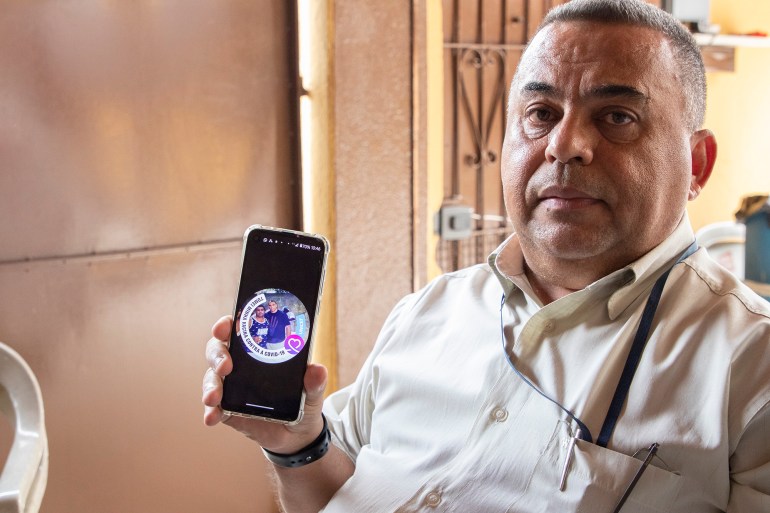
“Ronaldo first came in contact with futsal via our team,” 55-year-old Santos said, remembering the time when the footballer was young and frail.
“Back then, Ronaldo used to carry our shoes because he was too little to play. He was seven and his father would allow him to go with us. After the game ended, we would pass the hat for someone to buy us lemonade. We joked that Ronaldo was the first to run away to pick up the ice. He would never give us lemons or sugar. He was so clever.”
Residents said the area used to be a farm a long time ago. Some referred to it as “a poor area but not miserable, we had what we needed to survive”.
Santos and Oliveira both agreed that things had changed considerably, from development and construction to changes in habits, including the gradual reduction in the number of children playing on the streets.
“Everything was different back then,” said Santos. “We had fewer buildings, fewer people and these shops are all new. I don’t see children playing street football as we did. Back then it was every day starting at 4pm.
“The suburb vibe that we had has kind of faded and maybe that’s one of the reasons why we don’t see children playing on the streets.”
As her dog started barking louder, perhaps wanting to accompany her owner outdoors, Oliveira echoed Santos’s views and said “children stay more indoors now and that could be because of the internet or the pandemic”.
“Children still play in the street, but mostly on the weekend. In the past, they used to play every day. This street was always full of children all day.”
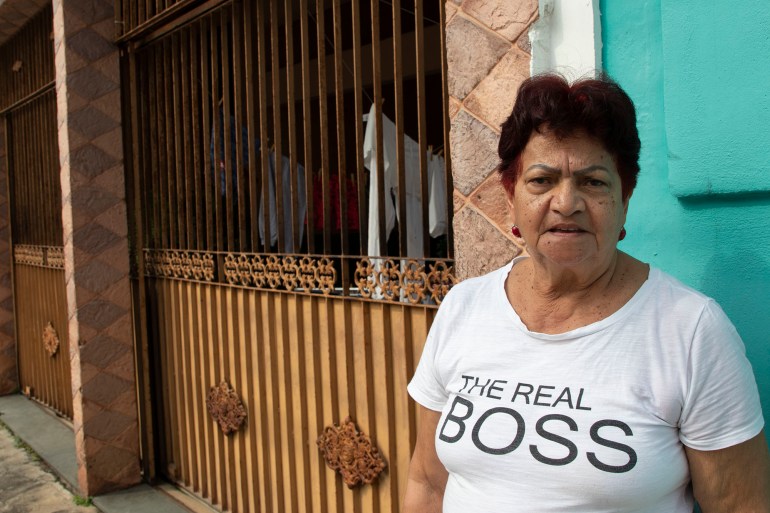
The most popular street football area in the neighbourhood is called Espirro. It was named after a street carnival called Espirro do Grilo. According to Santos, many children left a finger there while playing, as it was not paved and they were often shoeless.
Back on Ronaldo’s street, a walk down the slope past his house would lead you to a square with a café and plenty of open space.
Here, Jorge Luis Ferreira, 54, sat on one of the tables inside the café, sharing his memories. “I used to play more with Ronaldo´s cousin because the game was aggressive and Ronaldo was much younger than me,” Ferreira told Al Jazeera, waving to honking cars passing by.
“I was very happy when I saw Ronaldo win the World Cup but I was also sad because I know he had the potential to win many more titles. He deserves everything he has achieved.
“He started in a club that didn’t give enough structure. But he is resilient. I used to talk to my friends about this boy on my street who was a good footballer and added that he might have a future. This boy was Ronaldo.”
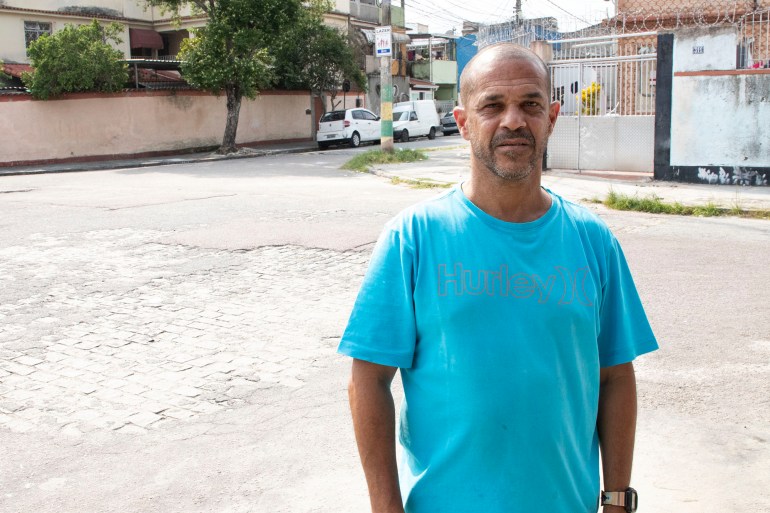
For Ronaldo, “a football pitch is the most perfect thing in the world … in a stadium, on a beach, or on just a big patch of grass with fruit trees”.
“This is where Ronaldo used to play with a football when he wasn’t able to play with the big kids,” Santos said, pointing to a small area outside one of the houses on the streets.
The cement layer is coming off the outside walls, exposing the bricks that sit behind, and a huge electric pole is taking up most of the cemented rectangular space barely big enough to fit three motorcycles.
This is where Ronaldo would continue kicking the ball after his brothers and friends had called it a day. He would then continue indoors, in his yard. There were trees that he would dribble around by himself, keeping his brain – and feet – occupied with the football and the thought of becoming one of the world’s best.
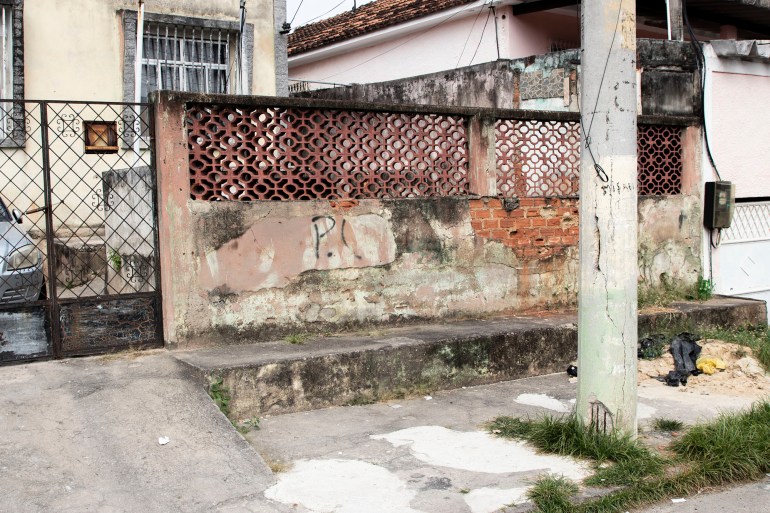
There is a proud feeling among residents of someone from the area becoming one of the world’s best. The younger generation from here would know more about Neymar than Ronaldo though, Santos said, adding that when Ronaldo last visited Bento Ribeiro, “the neighbourhood just stopped”.
“I’d receive a call at 10pm and it was Ronaldo asking if he could stop by and play football. He would arrive in a fancy car without bodyguards. He would choose that time not only because of his schedule but because the streets were quieter. We’d play football and talk about our childhood.
“When I look at Ronaldo, I don’t see this hugely famous person. I see Dadado [Ronaldo’s nickname which came about after he was not able to pronounce his name properly]. I am super proud because we know where he comes from and that he had to face difficulties.”